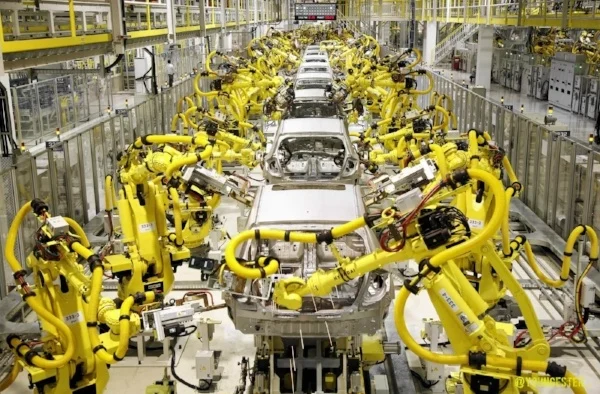Healing Hands: How Robotics is Revolutionizing Healthcare
- Tayyeb Momin
- Aug 30, 2023
- 3 min read

Welcome back to the third installment of our blog series exploring the profound impact of robotics on different industries. In our previous posts, we delved into the realms of agriculture and manufacturing, highlighting how robotics has revolutionized these sectors. In this edition, we shift our focus to the realm of healthcare, where robotics is making remarkable strides in diagnosis, treatment, surgery, and patient care. From precision surgeries to telemedicine, the fusion of robotics and medicine is redefining the future of healthcare in ways we could only imagine a few years ago.
1. Robotic Assisted Surgeries:
One of the most remarkable developments in the field of medical robotics is the advent of robotic-assisted surgeries. Surgeons are now equipped with highly advanced robotic systems that enhance their precision, dexterity, and control during procedures. A prime example of this is the da Vinci Surgical System, which has been used in a variety of complex surgeries, including prostatectomies, cardiac procedures, and hysterectomies. By offering magnified 3D visualization and fine-tuned robotic arms, these systems enable minimally invasive surgeries, leading to smaller incisions, reduced blood loss, and faster patient recovery times.

Case Study: Robotic Precision in Cardiac Surgery
In 2019, doctors in India successfully performed a complex heart surgery on a 10-year-old girl using the da Vinci Surgical System. The procedure marked a significant advancement in pediatric cardiac surgery, underscoring the potential of robotics in challenging medical scenarios.
2. Pharmaceutical Automation:
Robotics is also playing a pivotal role in the pharmaceutical industry, streamlining drug discovery, development, and production processes. Robotic platforms are being employed to automate repetitive tasks such as mixing compounds, dispensing medications, and conducting high-throughput screening. This not only accelerates the drug development timeline but also ensures higher accuracy and consistency, reducing the likelihood of human errors.
Case Study: Robotic Synthesis in Pharmaceutical Production
The University of Liverpool has recently integrated robotics into the synthesis process of a crucial cancer treatment medication. This innovative automated system has significantly enhanced the efficiency of chemical reactions, resulting in a shortened production cycle for the medication.
3. Remote Surgery and Telemedicine:
The fusion of robotics and telemedicine is breaking down geographical barriers in healthcare. Remote surgeries, where surgeons operate on patients located in different parts of the world, are becoming a reality. These surgeries are facilitated by robotic systems that transmit real-time feedback and visuals to the surgeon's console, allowing them to control robotic arms from a distance.
Case Study: Bridging Continents Through Robotic Surgery
In 2022, a team of doctors in the United States successfully performed a complex neurosurgical procedure on a patient in a rural area of Africa. The procedure was conducted using robotic technology, enabling expert surgical care to be delivered to a patient who would otherwise have limited access to such specialized treatment.
4. Rehabilitation and Physical Therapy:
Robotic devices are also making significant strides in the field of rehabilitation and physical therapy. Exoskeletons and robotic prosthetics are helping individuals with mobility impairments regain movement and independence. These devices provide support, resistance, and real-time feedback, assisting patients in their recovery journey.
Case Study: Robotic Exoskeletons and Paraplegic Mobility
A paraplegic patient was able to walk again with the help of a robotic exoskeleton. After intensive rehabilitation sessions, the patient regained the ability to stand and take steps, showcasing the potential of robotics in transforming the lives of those with spinal cord injuries.
Navigating Robotic Healthcare Ethics:
While the integration of robotics into healthcare presents promising opportunities, it also raises important ethical and regulatory considerations. Ensuring patient safety, data security, and proper training for medical professionals operating these systems are essential components of this ongoing technological evolution.
The Robotic Future of Healthcare:
The integration of robotics into the medical field is reshaping the landscape of healthcare. From precise surgeries to streamlined drug development, telemedicine, and rehabilitation, the impact of robotics is nothing short of revolutionary. As technology continues to advance, we can only anticipate further breakthroughs that will enhance patient care, improve treatment outcomes, and extend the boundaries of what is possible in the realm of medicine. Stay tuned for our next blog post, where we'll explore the role of robotics in yet another fascinating industry!




Comments